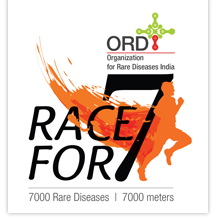India has recently completed a six-month pilot project sequencing the genomes of individuals within the nation. Could genome sequencing present a boon to combating rare diseases?
 Despite the infrequency the term implies, an estimated one in twenty Indians suffer from illnesses that fall under the classification of rare diseases. This translates to seventy million of the world’s 350 million cumulatively affected by rare diseases. In India, fifty percent of those are children.
Despite the infrequency the term implies, an estimated one in twenty Indians suffer from illnesses that fall under the classification of rare diseases. This translates to seventy million of the world’s 350 million cumulatively affected by rare diseases. In India, fifty percent of those are children.
Despite the number of people these diseases affect, awareness of the conditions is typically low and they are neglected in terms of funding for research. This is mostly attributed to the fact that while a vast number of Indians are affected by diseases falling under the umbrella of rare disease, each individual disorder may only affect a few hundred to a few thousand individuals.
Events such as the ‘Race For 7’ — an initiative championed by the Organization for Rare Diseases India (ORDI) — aim to raise awareness of the conditions both in India and abroad. The race symbolically represents over 7,000 rare diseases with the aim to get around 7,000 people running for seven kilometers — the average number of years it takes to diagnose a rare disease. The event has taken place annually for several years now.
Newly developed genome sequence analysis techniques, such as ANEVA-DOT — the results of which were described in the journal Science — detected the activity levels of maternal and paternal alleles across the genome, allowing the researchers to determine when the activity of an allele was outside the normal range. This could be a tremendous boon when establishing potential instances of rare disease as the overwhelming majority of such conditions have a genetic basis.
As of now, Indian genomes only represent 0.2 percent of the global genetic databanks. The current majority of genomes — around 96 percent — are of European ancestry. Ignoring the study of Indian genes leaves what could be a medical goldmine all but untapped. Current projects by Indian companies and through government institutions are expanding the presence of Indian genomes within databases. However, the number is still comparatively slight.
Genome sequencing at an early age could significantly improve rates of diagnosis. The capacity to diagnose rare disease is a major hurdle to cross before proper treatment — if it is available — can be given. Since many of these diseases can result in childhood mortality if left without treatment, timely diagnosis is a must. Investigating and assessing new tools is a key step in this regard.

